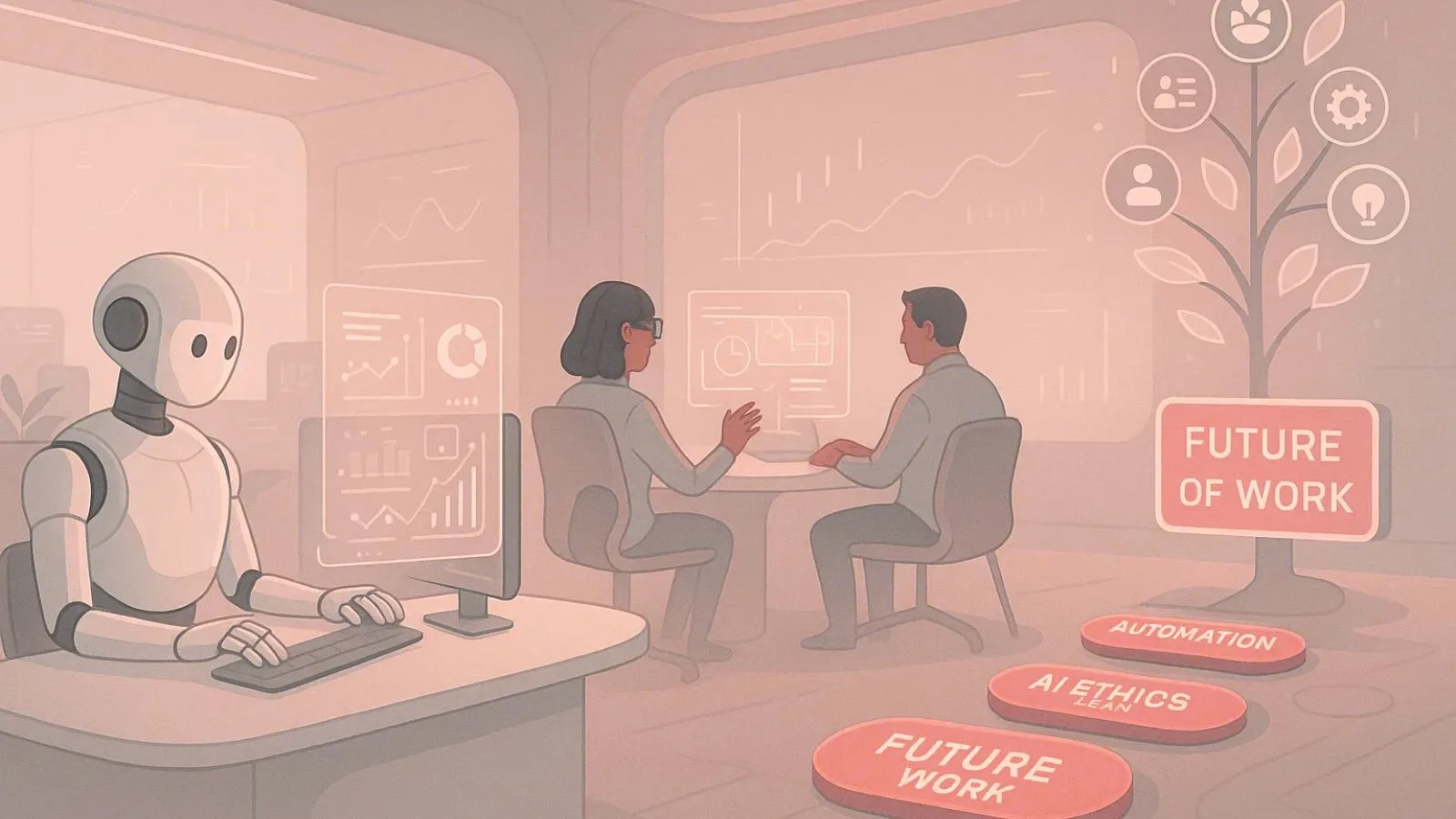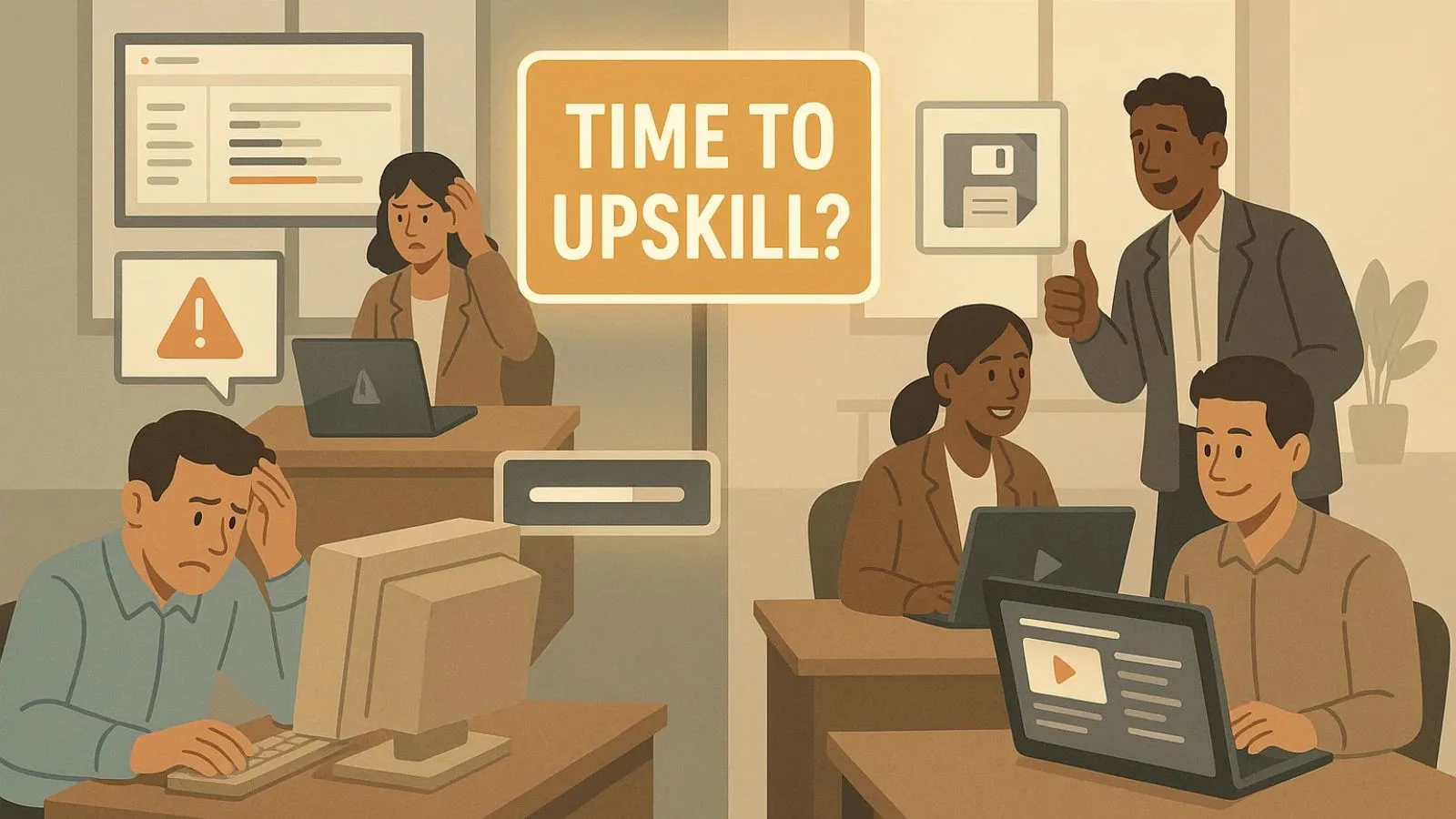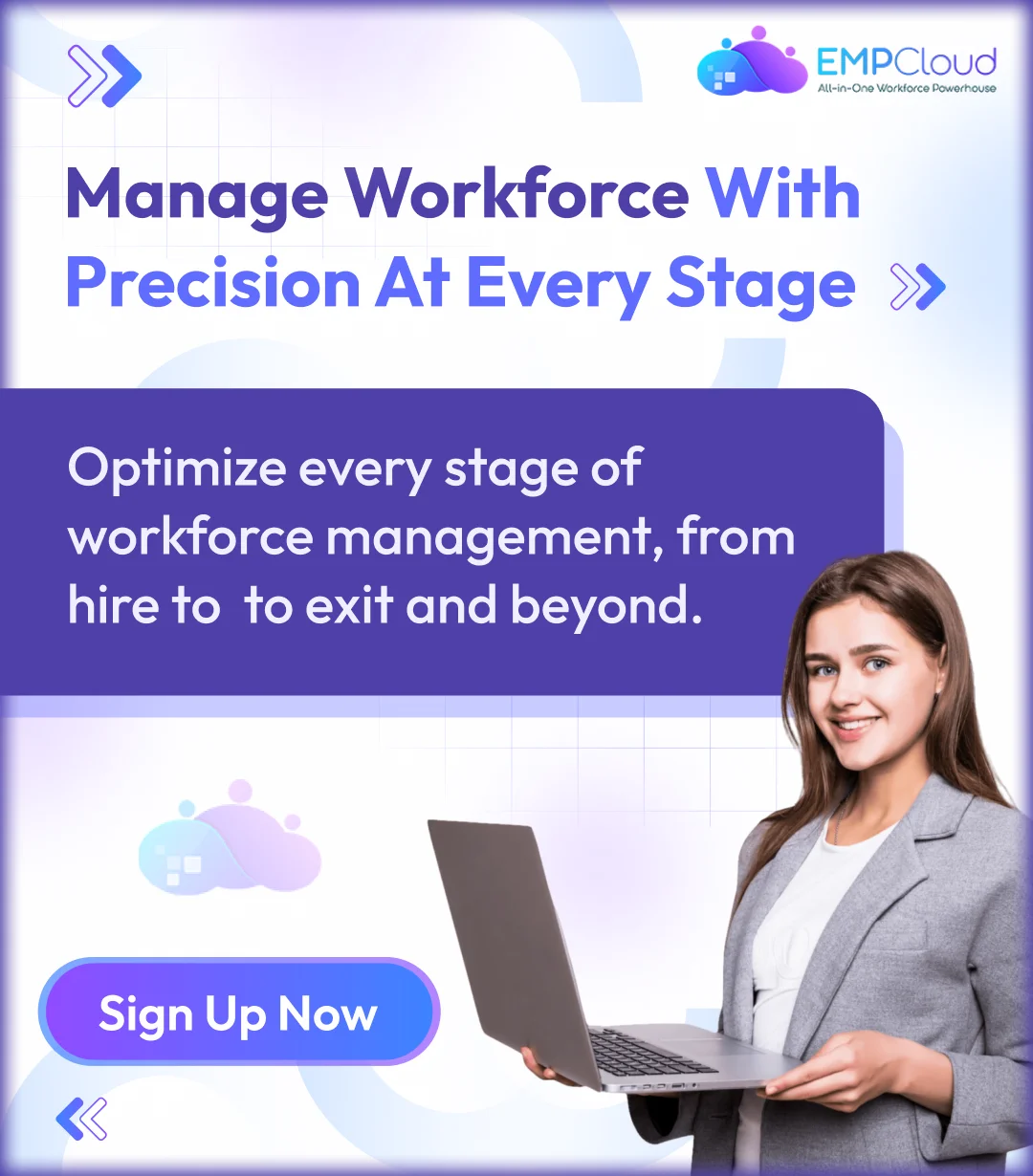
The way we work is changing quickly than ever before. With the rise of automation, AI, and rapidly shifting job requirements, the skills that were relevant yesterday might already be outdated today. For businesses, this presents both a challenge and an opportunity to grow. The key to staying relevant and future-ready? Strategic upskilling and reskilling.
In 2025, companies that fail to invest in skill development risk falling behind not just in innovation, but in productivity, employee satisfaction, and long-term sustainability. On the flip side, businesses that actively empower their people to grow are more agile, adaptive, and competitive.
This blog is your go-to guide on upskilling and reskilling, what it means, why it’s essential, and how you can implement it in a way that drives real impact. We’ll explore the difference between reskilling and upskilling, signs your workforce needs it, best practices, and how platforms like Empcloud.com can help you build a future-ready team.
You can Also Listen to our Blog here,
What Is Upskilling and Reskilling?
Before we dive into strategies, it’s important to clearly understand what upskilling and reskilling mean. Though they’re often used together, they serve slightly different purposes, and both are vital for keeping your workforce ready for the future.
Upskilling
Upskilling is the process of teaching employees new or advanced skills to help them perform better in their current roles. It’s about leveling up, deepening their expertise, or adapting to new tools, technologies, or methods.
Example: A content writer learning SEO best practices or AI tools to improve writing efficiency.
Reskilling
Reskilling, on the other hand, is about teaching employees completely new skills so they can transition into different roles. It’s often used when a job becomes obsolete or when employees are shifting departments or career paths within the company.
Example: A sales rep being trained in customer success or data analytics to fit evolving business needs.
Reskill vs Upskill: What’s the Real Difference?
Upskilling = advancing existing skills
Reskilling = learning new skills for a different role
Both play a huge role in workforce agility and retention. In today’s dynamic environment, it’s not a question of reskilling vs upskilling; you need a strategy that includes both.
Why It Matters More Than Ever in 2025?
The workplace in 2025 is significantly different from what it was just a few years ago. AI is handling routine tasks, remote work has gone mainstream, and digital tools are constantly changing how teams operate. In this fast-paced environment, upskilling and reskilling are no longer just HR trends; they’re business essentials.
Jobs Are Evolving Fast
Roles that were in demand five years ago may be completely transformed today. According to global workforce reports, nearly half of all employees will need new skill sets by the end of the decade. Companies that fail to prepare will find themselves with outdated teams and outdated results.
Talent Shortages Are a Real Threat
Hiring new Employees isn’t always the solution. It’s expensive, time-consuming, and doesn’t guarantee long-term success. Instead, turning inward and investing in your existing workforce through employee upskilling can fill critical skill gaps faster and more cost-effectively.
Adaptability Equals Survival
The companies that adapt quickest to industry changes are the ones leading the market. With the right mix of reskilling and upskilling for a future-ready workforce, you’re not just preparing employees, you’re future-proofing your entire business.
It Boosts Retention and Morale
When employees feel like they’re growing, they’re more likely to stay. A strong learning culture attracts ambitious professionals and builds loyalty over time. People want to work where they can evolve, not stay stuck.
Key Components of an Effective Upskilling and Reskilling Strategy
Creating a solid plan for upskilling and reskilling isn’t about offering a few online courses and calling it a day. It’s about building a culture of continuous growth backed by structure, support, and strategy. Here are the key elements you need to make it successful:
1. Skills Gap Analysis
Start by identifying where your team currently stands and where they need to go. What skills are missing? Which roles are at risk of becoming outdated? This step helps prioritize who needs training and in what areas.
2. Personalized Learning Paths
Every employee learns differently and has unique skill needs. Offer tailored training that aligns with individual career goals and current roles. This boosts engagement and learning outcomes.
3. Internal Mobility Opportunities
Training is only half the story. Once someone has new skills, give them a path to use them. Promote from within, allow lateral moves, or let employees explore new departments.
4. Leadership Support
Managers and team leads should actively support and participate in development efforts. When leadership believes in the value of upskilling and reskilling the workforce, employees are more likely to take it seriously.
5. On-the-Job Application
Learning sticks best when it’s immediately applied. Let employees use new skills in live projects, cross-functional teams, or pilot programs. Hands-on experience is more impactful than theory alone.
6. Continuous Feedback and Assessment
Training shouldn’t be “set it and forget it.” Regular check-ins, progress tracking, and feedback sessions help measure effectiveness and adjust when needed.
7. Use of Technology and Tools
Leverage modern learning platforms and workforce management systems to track training progress, skill development, and ROI. This is where platforms like Empcloud.com (covered in the next section) play a huge role.
Signs Your Workforce Needs Upskilling and Reskilling
Sometimes, the need for upskilling and reskilling isn’t obvious until performance starts slipping. But if you know what signs to look for, you can act before things fall behind. Here are some obvious signs that your team could benefit from upgrading its skills:
1. Productivity Has Plateaued or Dropped
If your team isn’t getting more efficient over time, it might not be a motivation problem; it could be a skills gap. New tools, faster methods, and better processes are out there. Without proper training, teams fall behind.
2. Employees Struggle with New Technology
Introducing a new CRM or automation tool? If it takes weeks (or months) for your team to get comfortable, it’s a sign they need structured support through employee upskilling.
3. Innovation Feels Stagnant
No new ideas? No process improvements? It might be because your employees don’t feel confident or prepared to contribute beyond their daily tasks. Training inspires creativity.
4. High Turnover or Low Engagement
When people don’t see a growth path, they start looking elsewhere. Regular upskilling and reskilling the workforce shows your team that you’re invested in their future, and that encourages loyalty.
5. Customer Complaints Are Increasing
If your team is making avoidable mistakes or providing outdated solutions, it may not be a performance issue; it could be a training issue. Upskilling can improve service quality and consistency.
6. Difficulty Filling Internal Roles
Have you been hiring externally because no one internally is “ready” to step up? That’s a strong signal that your reskilling pipeline needs work.
7. Industry Trends Are Passing You By
If competitors are adopting new practices or technologies faster than you, it’s time to up your game. Staying competitive means staying educated and skilled.
How to Start Upskilling and Reskilling the Workforce?
Now that you know the signs and why it matters, the next step is taking action. Building a learning-focused culture doesn’t require a massive overhaul; it starts with a few smart, intentional steps. Here’s how to launch or improve your upskilling and reskilling efforts effectively:
1. Build a Culture of Learning
Encourage curiosity and growth at every level. Celebrate progress, share learning wins across teams, and make learning a normal part of the workweek, not just something extra.
2. Conduct Role-Based Skill Mapping
Look at each job in your organization and map out the skills it requires today—and the ones it’ll need tomorrow. Then, match those with the current skills of your team. The gap is your training roadmap.
3. Use Flexible, Bite-Sized Learning
Not everyone has time for long courses. Use microlearning short videos, articles, or simulations to keep training efficient and accessible. This works especially well for ongoing employee upskilling.
4. Pair Reskilling with Real Role Opportunities
Give employees a reason to reskill. Provide opportunities for employees to switch departments, apply for internal positions, or take on new roles after completing training.
5. Include Soft Skills and Digital Literacy
It’s not just about technical know-how. Communication, problem-solving, adaptability, and comfort with digital tools are all part of a future-ready workforce.
6. Track Progress with the Right Metrics
Don’t just run training, measure it. Use completion rates, skill assessments, and performance outcomes to understand what’s working and what needs improvement.
7. Involve Managers in the Process
Managers should act as mentors, not just supervisors. Encourage them to identify skill gaps, recommend training, and follow up on development progress.
How Empcloud Can Help Upskill and Reskill Your Workforce?
Implementing a strategy is one thing; managing and scaling it across departments, teams, and time zones is another. That’s where technology steps in. Workforce management tools like Empcloud.com can help you not only streamline but supercharge your upskilling and reskilling efforts.
Here’s how platforms like Empcloud.com make a real difference in building a future-ready workforce:
1. Centralized Skill Tracking and Reporting
One of the biggest challenges in workforce development is knowing who has what skills and where the gaps are. Empcloud.com offers a centralized dashboard where you can:
Monitor current skill levels
Track employee progress over time
Identify skill gaps at both the team and organizational levels
Generate reports that help HR and leadership make data-driven training decisions
This visibility allows companies to plan more strategically and ensure that no one gets left behind.
2. Personalized Learning Journeys
No two employees are the same. Empcloud.com enables organizations to create custom learning paths based on job roles, existing competencies, and career goals. This means your content writer, data analyst, and sales executive each get training that’s relevant to them.
By offering a more personalized learning experience, you boost engagement, accelerate development, and make training feel less like a checkbox and more like an opportunity.
3. Seamless Integration with Learning Tools
Empcloud.com doesn’t try to reinvent the wheel. It integrates easily with leading Learning Management Systems (LMS), content providers, and microlearning platforms. That way, your team can access:
Internal training modules
External certifications
Video tutorials, simulations, and real-time assessments
This flexibility ensures you’re not locked into one kind of training and can evolve as your company’s needs grow.
4. Real-Time Feedback and Skill Assessments
Ongoing learning only works when you can measure its effectiveness. Empcloud.com provides real-time feedback mechanisms and skill assessments that evaluate whether employees are truly gaining the knowledge they need.
This means you can pivot and refine your strategy on the go, doubling down where progress is great and troubleshooting where engagement is low.
5. Encourages Internal Mobility
Reskilling is most effective when there’s a next step ready. Empcloud.com supports career path planning and internal job boards that help employees apply their new skills in-house. By highlighting open positions and cross-departmental opportunities, it bridges the gap between training and career growth.
This not only helps retain top talent but also reduces hiring costs by filling roles from within.
6. Automates Training Workflows
Running a large-scale reskilling initiative manually? Not efficient. Empcloud.com automates:
Learning schedules
Reminder notifications
Progress updates
Compliance tracking
This saves time for HR and training managers and ensures employees stay on track without needing constant nudges.
7. Data-Backed Decision Making
With workforce monitoring capabilities, Empcloud.com offers data-driven insights into performance trends, training effectiveness, and organizational readiness. These insights help you answer key questions like:
Are we closing skill gaps fast enough?
Which departments are falling behind?
What’s the ROI of our training programs?
Armed with this data, you can refine your employee upskilling strategy and confidently scale what’s working.
Why Empcloud Is Built for the Future of Work?
In 2025 and beyond, workforce agility is the name of the game. Platforms like Empcloud.com are not just about tracking hours or performance; they’re about enabling growth. By combining workforce management, employee engagement, and skill development in one place, it becomes a powerful tool for:
Scaling your training efforts
Boosting team performance
Future-proofing your talent strategy
No matter your company size or industry, investing in the right technology is a strategic move that pays off in retention, productivity, and innovation.
Read More,
Master Workforce Management In 2025 Like Never Before!
How To Build An Effective New Employee Onboarding Process?
Conclusion: Upskilling and Reskilling Aren’t Optional. They’re Essential
In today’s ever-evolving work landscape, businesses can’t afford to stand still. The skills that got your team here won’t be enough to get them through the next phase. That’s why upskilling and reskilling the workforce isn’t just a trend; it’s a survival strategy.
Whether it’s keeping pace with AI, adapting to digital transformation, or simply filling internal gaps, developing your existing talent is faster, smarter, and more cost-effective than constantly chasing new hires. And with the right tools like Empcloud.com, building a future-ready team becomes not just achievable, but scalable.
The companies that thrive in 2025 and beyond will be the ones that prioritize growth, from the inside out.
So start now. Assess your team’s strengths. Identify the gaps. Build learning pathways. And give your people the opportunity to evolve because when they grow, your business does too.
FAQs About Upskilling and Reskilling
1. What is the main difference between upskilling and reskilling?
Upskilling means enhancing current skills to perform better in an existing role, for example, learning advanced Excel for a data analyst role.
Reskilling is about learning entirely new skills for a different role, like training a customer service rep to become a digital marketer.
Both approaches are essential for creating a future-ready workforce.
2. How do I know if my company needs an upskilling or reskilling strategy?
Look for signs like:
Productivity plateau
High employee turnover
Struggles with new tech
Innovation slowdowns
Trouble filling internal roles
If any of these sound familiar, it’s time to act. A well-rounded employee upskilling and reskilling strategy can address these issues head-on.
3. What tools can help with workforce development?
Workforce and employee management platforms like Empcloud.com are built to streamline and scale upskilling and reskilling. They provide features like:
Skill tracking
Personalized training paths
Real-time assessments
Internal mobility planning
They make it easier for HR and leadership to drive continuous learning and stay competitive.


